Dashboard lighting plays a crucial role in driving safety and comfort, yet it remains one of the most overlooked aspects of vehicle design. The difference between properly adjustable dash lighting and overly bright, blinding gauges can mean the distinction between a pleasant night drive and a potentially dangerous one.
Modern automotive design has evolved to recognize that one size does not fit all when it comes to interior illumination, leading manufacturers to develop sophisticated lighting systems that adapt to various driving conditions and personal preferences.
Adjustable dash lighting systems allow drivers to customize brightness levels, color temperatures, and even specific zone lighting to match their comfort needs and environmental conditions.
These systems take into account factors such as ambient light, time of day, and individual visual preferences. Conversely, vehicles with fixed, overly bright dashboard lighting can cause eye strain, reduced night vision, and driver fatigue, especially during extended nighttime driving sessions.
The contrast between these approaches reflects broader philosophical differences in automotive design. Progressive manufacturers prioritize user experience and safety by implementing adaptive lighting technologies, while others may prioritize aesthetics or cost-cutting measures that result in less optimal lighting solutions.
This comparison examines ten vehicles that represent both ends of this spectrum, analyzing their dashboard lighting systems and the real-world impact on driving experience.
5 Vehicles With Adjustable Dash Lighting
These thoughtfully designed vehicles feature comprehensive dimmer controls and customizable illumination systems that allow drivers to precisely adjust gauge brightness, screen intensity, and ambient lighting to match driving conditions and personal preferences perfectly.
Their sophisticated lighting management includes automatic sensors that gradually adapt to changing light conditions, multiple color themes for different moods, and independent control zones that optimize readability without compromising night vision.
The integration of smooth dimming transitions and memory settings ensures consistent comfort across various lighting scenarios, from bright daylight driving to pitch-black rural roads.
From luxury sedans with infinite adjustment ranges to practical crossovers with intuitive brightness wheels, these vehicles prioritize driver comfort through intelligent illumination that enhances both safety and driving enjoyment.
1. Mercedes-Benz S-Class (2020-2024)
The Mercedes-Benz S-Class represents the pinnacle of automotive luxury and technological sophistication, and its dashboard lighting system exemplifies this commitment to excellence.
The S-Class features an advanced ambient lighting system with 64 different color options and multiple brightness levels that can be adjusted through the vehicle’s infotainment system or physical controls on the dashboard.
The S-Class employs a multi-zone lighting approach that allows drivers to customize different areas of the dashboard independently. The instrument cluster features OLED technology with automatic brightness adjustment based on ambient light conditions, while the central display and climate control areas can be dimmed separately.
This granular control ensures that critical driving information remains visible without overwhelming the driver’s peripheral vision.
One of the most impressive features of the S-Class lighting system is its integration with the vehicle’s various driving modes. In comfort mode, the lighting adopts warmer tones that promote relaxation, while sport mode introduces more aggressive, cooler lighting schemes.
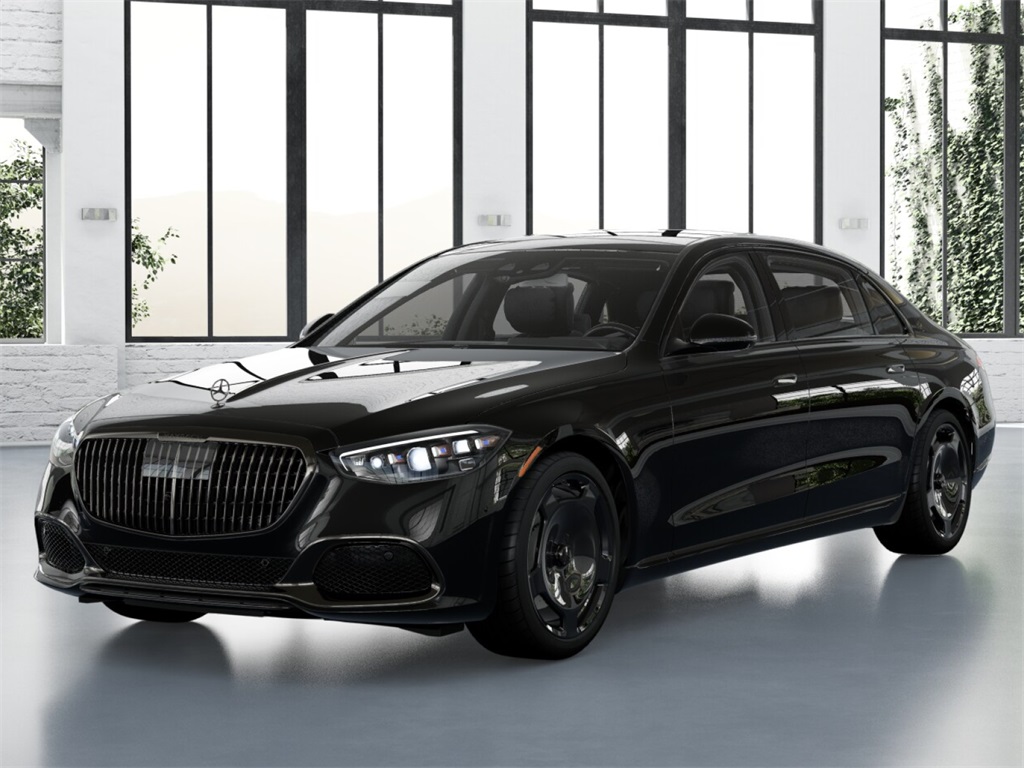
The system also includes a “dark mode” option that minimizes all unnecessary lighting while maintaining essential gauge visibility, perfect for drivers who prefer minimal distraction during night driving.
The color customization extends beyond mere aesthetics, serving functional purposes as well. Cooler blue and white tones can help maintain alertness during long drives, while warmer amber and red tones reduce eye strain and preserve night vision.
The system remembers individual driver preferences through the vehicle’s memory seats function, automatically adjusting lighting settings when different drivers enter the vehicle.
Mercedes has also incorporated smart adaptive features that respond to external conditions. The system can detect when the vehicle enters a tunnel or parking garage and automatically adjust brightness levels accordingly.
During navigation, the ambient lighting can even provide subtle directional cues, with the lighting gently shifting toward the direction of an upcoming turn.
The build quality of the S-Class lighting system is exceptional, with even light distribution and no hot spots or flickering issues commonly found in lesser systems.
The controls are intuitive and responsive, allowing for real-time adjustments without taking attention away from the road. This attention to detail makes the S-Class a benchmark for how dashboard lighting should be implemented in modern vehicles.
2. Audi A8 (2018-2024)
Audi’s flagship A8 sedan showcases the brand’s commitment to cutting-edge technology through its sophisticated Matrix LED dashboard lighting system.
The A8’s approach to interior lighting goes beyond simple brightness adjustment, incorporating dynamic elements that respond to driving conditions and user preferences in real-time.
The A8 features a fully digital cockpit with two high-resolution displays that can be customized extensively. The virtual instrument cluster allows drivers to choose from multiple display themes, each with its own lighting characteristics.
The system offers over 30 ambient lighting colors and multiple brightness zones, enabling precise control over every illuminated surface in the cabin.
What sets the A8 apart is its predictive lighting behavior. The system learns from the driver’s habits and automatically adjusts lighting based on time of day, route characteristics, and historical preferences.
If a driver typically dims the lights when entering highway stretches, the system will begin making these adjustments proactively on similar road types.

The A8’s lighting system integrates seamlessly with Audi’s MMI infotainment platform, allowing for voice control adjustments. Drivers can simply say “dim dashboard lights” or “set ambient lighting to blue” without taking their hands off the steering wheel.
This hands-free control is particularly valuable during night driving when any distraction can compromise safety. The quality of the A8’s lighting implementation is remarkable, with precise color accuracy and smooth brightness transitions.
The system eliminates the harsh cut-offs and uneven illumination that plague many vehicles, instead providing gentle, graduated lighting that feels natural and comfortable. The OLED displays offer perfect black levels, ensuring that dark elements truly disappear rather than appearing as glowing gray patches.
Audi has also implemented smart lighting zones that can highlight specific functions when needed. When adjusting climate controls, for example, that section of the dashboard receives subtle additional illumination to improve visibility.
This contextual lighting approach reduces the need for bright lighting while ensuring that active controls remain visible. The A8’s lighting system extends its benefits to passenger comfort as well, with individual reading lights and ambient zones that can be controlled independently.
This thoughtful approach ensures that driver lighting preferences don’t compromise passenger comfort, making the A8 an excellent choice for both solo drives and family journeys.
3. BMW 7 Series (2019-2024)
BMW’s 7 Series demonstrates the brand’s engineering excellence through its comprehensive iDrive-integrated lighting system. The 7 Series takes a driver-focused approach to dashboard illumination, prioritizing functionality and ergonomics while maintaining the aesthetic appeal that BMW customers expect.
The heart of the 7 Series lighting system is its adaptive brightness control, which uses multiple sensors to monitor both interior and exterior lighting conditions.
The system makes constant micro-adjustments throughout the drive, ensuring optimal visibility without requiring manual intervention. This automatic adjustment is particularly beneficial during transitional periods like dawn and dusk when lighting conditions change rapidly.
BMW’s approach to color customization in the 7 Series is more restrained than some competitors, focusing on a carefully curated palette of colors that have been tested for optimal visibility and reduced eye strain.
The available colors include several shades of white, blue, amber, and red, each calibrated to provide maximum information clarity while minimizing visual fatigue.
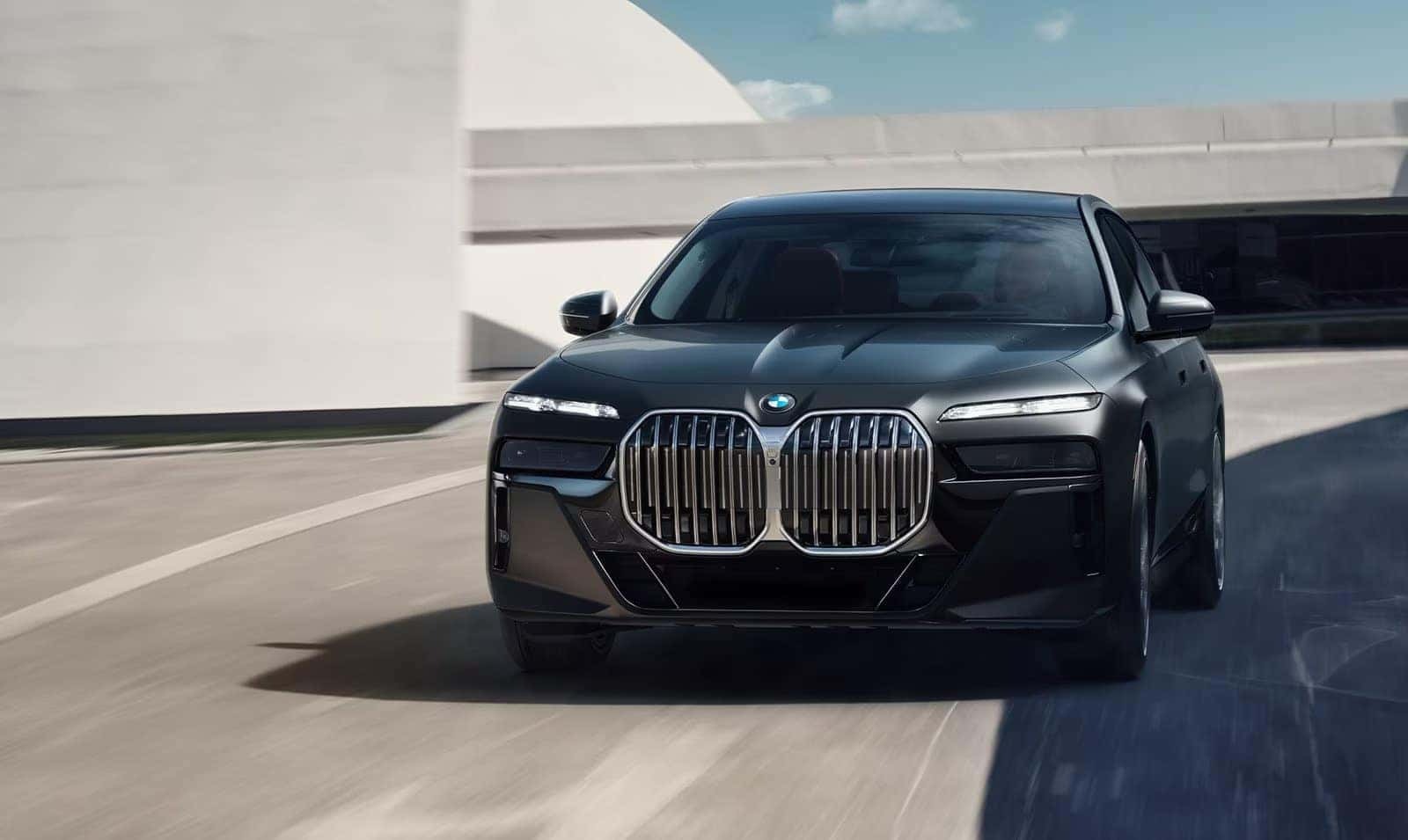
The 7 Series features BMW’s latest iDrive system with a curved display that integrates seamlessly with the lighting scheme. The system offers multiple display modes, including a high-contrast mode for maximum visibility and a comfort mode that reduces blue light emission during evening drives.
The integration between the digital displays and physical controls is particularly well-executed, with consistent lighting themes throughout the cabin.
One standout feature of the 7 Series is its attention to ergonomic lighting placement. Critical controls like the gear selector, parking brake, and window switches receive targeted illumination that enhances usability without creating glare.
The system includes subtle lighting cues that guide the driver’s attention to important functions during specific scenarios, such as highlighting the parking brake during parking maneuvers.
The build quality of BMW’s lighting system reflects the brand’s attention to detail. The LEDs provide consistent color temperature and brightness across all illuminated surfaces, and the system includes thermal management to prevent brightness degradation over time.
The controls are responsive and intuitive, with physical buttons that provide tactile feedback even in low-light conditions. BMW has also incorporated its ConnectedDrive technology into the lighting system, allowing for remote customization through the BMW mobile app.
This feature enables owners to pre-set lighting preferences before entering the vehicle, ensuring optimal comfort from the moment they start their journey.
4. Lexus LS 500 (2018-2024)
The Lexus LS 500 represents Japanese luxury at its finest, with a dashboard lighting system that emphasizes refinement, reliability, and user comfort. Lexus has taken a holistic approach to interior lighting, considering not just functionality but also the psychological impact of different lighting schemes on driver wellbeing.
The LS 500 features a comprehensive ambient lighting system with 28 different color options and infinite brightness adjustment capability. The system is built around Lexus’s philosophy of “omotenashi” or Japanese hospitality, ensuring that every aspect of the lighting experience feels welcoming and intuitive.
The color options range from subtle whites and creams to more dramatic blues and purples, all calibrated to work harmoniously with the vehicle’s interior materials.
What distinguishes the LS 500 is its integration with the vehicle’s wellness-focused features. The lighting system can synchronize with the climate control and seat massage functions to create coordinated comfort zones.
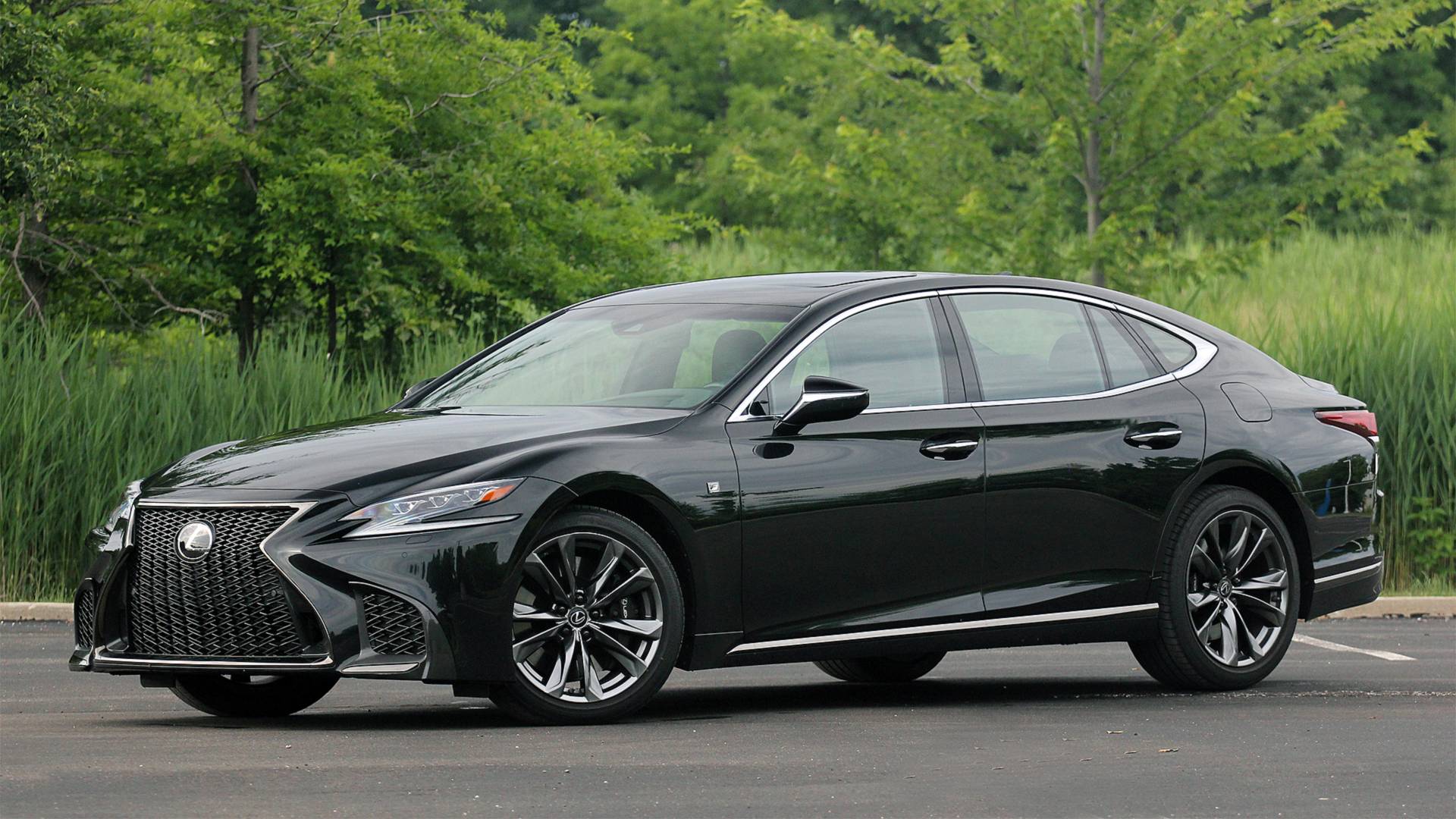
For example, the “Refresh” mode combines cooler lighting with increased ventilation and an invigorating seat massage, while the “Relax” mode uses warmer lighting with softer climate settings.
The LS 500’s instrument cluster features a unique analog-digital hybrid design with customizable lighting zones. Drivers can adjust the brightness of the analog gauges independently from the digital display areas, allowing for personalized visibility preferences.
The system includes a night mode that uses red-filtered lighting to preserve night vision while maintaining gauge readability. Lexus has paid particular attention to the quality of light distribution in the LS 500.
The system uses advanced LED technology with precise optical control to eliminate hot spots and ensure even illumination across all surfaces. The lighting transitions are smooth and gradual, avoiding the jarring brightness changes that can be distracting during night driving.
The LS 500 includes several preset lighting modes designed for different driving scenarios. The “Dynamic” mode uses brighter, cooler lighting to enhance alertness during spirited driving, while the “Comfort” mode employs warmer, dimmer lighting for relaxed cruising.
The system can also create custom profiles that remember individual preferences for different times of day or driving conditions. Integration with the Lexus infotainment system allows for voice control of lighting functions, and the system includes gesture recognition capability for certain adjustments.
This multi-modal control approach ensures that drivers can make lighting adjustments through their preferred method without compromising safety or convenience.
Also Read: 5 Vehicles With Simple Hitch Setup vs 5 With Complicated Tow Prep
5. Genesis GV90 (2022-2024)
Genesis has established itself as a serious luxury contender, and the GV90’s dashboard lighting system demonstrates the brand’s commitment to innovation and user experience.
The GV90 features one of the most advanced and customizable lighting systems available in the luxury SUV segment, with features that rival or exceed those found in more established luxury brands.
The GV90’s lighting system centers around a massive curved display that spans nearly the entire width of the dashboard. This display integrates seamlessly with the ambient lighting system, creating a cohesive visual environment that can be customized extensively.
The system offers 64 different color combinations and supports gradient lighting effects that create smooth color transitions across different zones. Genesis has implemented an intelligent lighting system that responds to driving modes and conditions automatically.
In sport mode, the lighting becomes more aggressive with brighter, cooler tones and dynamic effects that pulse with engine rpm. In eco mode, the lighting shifts to calming greens and blues that reinforce the vehicle’s efficient operation. The luxury mode uses warm, golden tones that emphasize comfort and refinement.
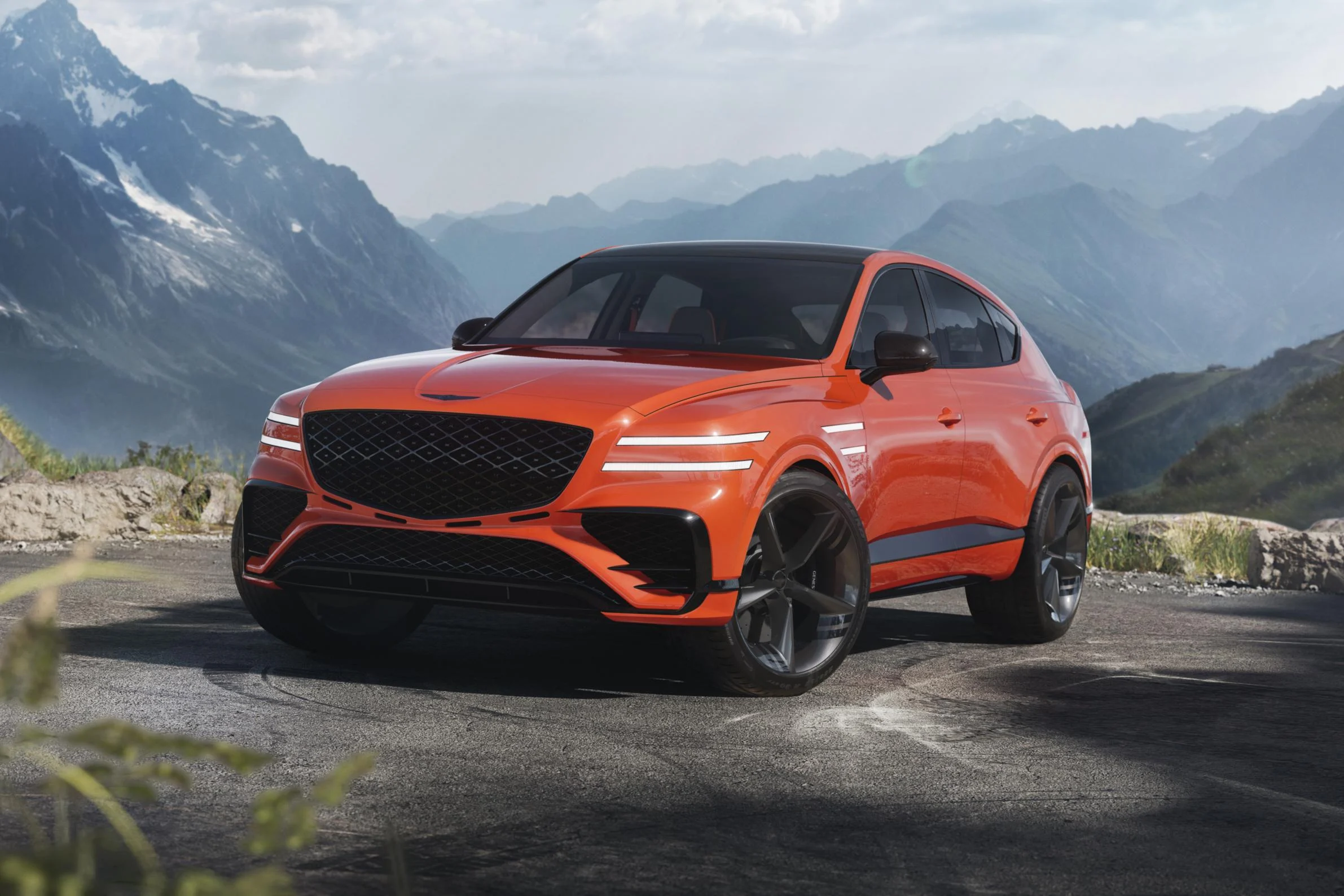
The GV90 includes advanced biometric sensors that can detect driver stress levels and adjust lighting accordingly. If the system detects signs of fatigue or stress, it can automatically adjust the lighting to more alerting colors and brightness levels. This proactive approach to driver wellness represents the cutting edge of automotive lighting technology.
Customization options in the GV90 are extensive, with the ability to create and save multiple lighting profiles for different drivers or scenarios. The system can sync with the driver’s smartphone to automatically load preferred settings based on calendar appointments or time of day.
For business meetings, the lighting might be set to professional cool tones, while weekend drives could trigger more relaxed, warm lighting schemes.
The build quality of the GV90’s lighting system is exceptional, with precise color accuracy and no visible LED artifacts. The system includes advanced thermal management to maintain consistent performance even during extended use, and the LEDs are rated for the vehicle’s entire lifespan without significant degradation.
Genesis has also incorporated unique features like “welcome lighting” sequences that greet the driver with personalized light shows when approaching the vehicle. These sequences can be customized and serve both aesthetic and functional purposes by illuminating key areas of the interior as the driver enters.
5 Vehicles With Blinding Gauges
These poorly calibrated vehicles assault drivers with excessively bright dashboard displays and harsh gauge lighting that creates dangerous glare, eye strain, and compromised night vision during critical driving moments when visual adaptation becomes essential.
Their overpowered LED arrays and poorly designed light diffusion create intense hotspots that overwhelm peripheral vision, making it difficult to see beyond the windshield after glancing at instruments or navigation screens.
The combination of non-adjustable brightness levels, stark white illumination, and reflective surfaces creates uncomfortable driving conditions that force drivers to squint or look away from essential information.
From budget cars with basic lighting circuits to poorly engineered displays with maximum-brightness defaults, these vehicles transform routine gauge monitoring into uncomfortable experiences that compromise both safety and driving pleasure.
1. Chevrolet Camaro (2016-2023)
The Chevrolet Camaro, particularly in its sixth-generation form, represents a significant misstep in dashboard lighting design that prioritizes aggressive aesthetics over practical functionality.
While the Camaro excels in many performance metrics, its dashboard lighting system has been a consistent source of complaint among owners and automotive journalists alike.
The primary issue with the Camaro’s dashboard lighting stems from its use of bright white and blue LEDs throughout the instrument cluster and center console.
These LEDs produce an intense, cold light that can be overwhelming during night driving, particularly on dark rural roads where the contrast between the bright dashboard and the dark environment becomes most pronounced. The brightness level, even at its minimum setting, remains uncomfortably high for many drivers.
The Camaro’s instrument cluster features a central analog speedometer flanked by digital displays, all illuminated with the same intense LED backlighting.
The white numerals and graphics appear to glow against their black backgrounds, creating a harsh visual contrast that can cause eye strain during extended night driving sessions. The brightness adjustment range is limited, with the dimmest setting still producing more light than many drivers prefer.
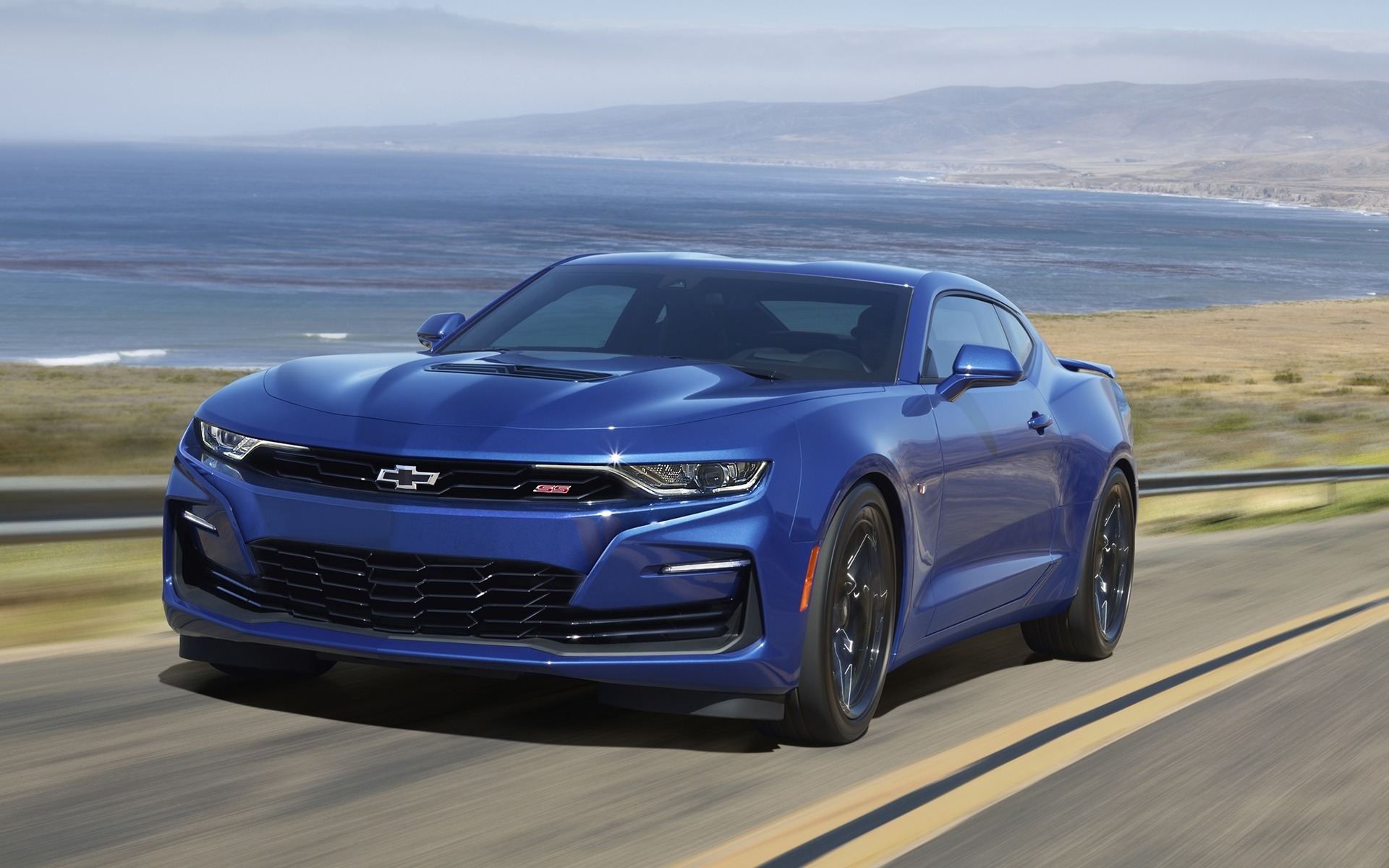
Particularly problematic is the center console’s infotainment screen and climate control area, which feature bright white LED backlighting that cannot be dimmed sufficiently.
The contrast between these bright white lights and the dark interior materials creates multiple bright spots in the driver’s peripheral vision, which can be distracting and compromise night vision adaptation.
The harsh lighting makes it difficult for drivers to maintain their natural night vision, requiring longer readjustment periods when looking back at the road.
The Camaro’s lighting design philosophy seems to prioritize the aggressive, high-tech appearance that appeals to the car’s target demographic over ergonomic considerations.
The bright blue accent lighting, while visually striking in showroom conditions, becomes problematic during actual night driving. The blue light, in particular, has been shown to be more disruptive to circadian rhythms and can contribute to driver fatigue during long drives.
The physical controls in the Camaro suffer from similar lighting issues. The window switches, door locks, and other frequently used controls feature bright white backlighting that creates additional glare points throughout the cabin.
This scattered bright lighting makes it difficult for drivers to quickly locate controls without being distracted by the brightness of the interior environment.
User complaints about the Camaro’s lighting system are widespread across automotive forums and reviews. Many owners report having to use aftermarket solutions like dashboard covers or tinted films to reduce the glare, while others simply avoid night driving in their Camaros whenever possible.
The lack of adequate brightness control has been cited as a significant factor in some owners’ decisions to trade their vehicles for models with more user-friendly lighting systems.
2. Dodge Challenger (2015-2023)
The Dodge Challenger’s dashboard lighting system exemplifies the pitfalls of prioritizing retro styling over modern ergonomic principles. While the Challenger successfully captures the aesthetic of classic American muscle cars, its approach to interior lighting creates significant visibility and comfort issues that affect the driving experience, particularly during nighttime operation.
The Challenger’s most significant lighting problem stems from its use of bright orange and red LED lighting throughout the instrument cluster. While these colors are intended to evoke the classic muscle car era, they are implemented with modern LED intensity that creates an overwhelming visual experience.
The orange backlighting, in particular, is notorious for being too bright even at minimum settings, creating a harsh glow that dominates the driver’s field of view.
The instrument cluster layout compounds the lighting issues through poor contrast management. The white numerals and indicators against the bright orange background create a challenging visual environment that requires increased mental effort to process.
During night driving, this high-contrast, high-brightness combination can cause significant eye strain and make it difficult to quickly reference gauge information without losing focus on the road ahead.
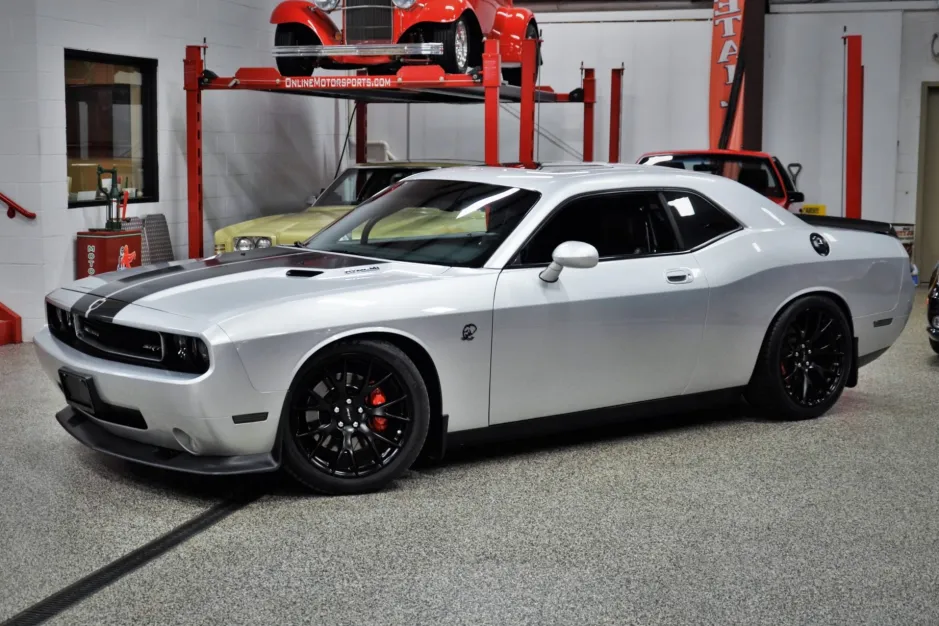
The Challenger’s center console lighting continues the problematic theme with bright white LED backlighting for the infotainment system and climate controls.
The system lacks sufficient dimming capability, leaving drivers with limited options to reduce the cabin brightness. The combination of bright orange gauge lighting and harsh white console illumination creates multiple competing light sources that fragment the driver’s attention and compromise night vision.
Temperature and fuel gauges in the Challenger are particularly problematic due to their small size combined with intense backlighting.
The high brightness makes these gauges appear to glow intensely, but the actual information becomes harder to read due to the overwhelming background illumination. This counterproductive design makes critical vehicle information less accessible rather than more visible.
The Challenger’s lighting system also suffers from poor integration between different lighting zones. The gauge cluster, center console, and ambient lighting systems operate independently without coordinated dimming or color temperature adjustment.
This lack of integration results in an inconsistent and visually jarring interior environment that varies dramatically between different areas of the cabin. Physical control of lighting in the Challenger presents additional challenges.
The window switches, door handles, and steering wheel controls all feature bright white LED backlighting that cannot be adjusted independently.
These scattered bright points create a constellation of glare sources throughout the cabin that make it difficult to maintain adapted night vision and can be particularly problematic for drivers with light sensitivity.
The Challenger’s lighting issues have generated significant negative feedback from automotive reviewers and owners. Many professional reviews specifically cite the dashboard lighting as a major drawback, with some reviewers recommending potential buyers test drive the vehicle at night before making a purchase decision.
Owner forums are filled with modification guides and aftermarket solutions aimed at addressing the lighting problems, indicating the widespread nature of the issue.
3. Subaru WRX (2015-2022)
The Subaru WRX, particularly in its VA generation, demonstrates how performance-focused design priorities can overlook crucial ergonomic considerations in dashboard lighting.
While the WRX excels as a driver-focused performance sedan, its interior lighting system creates significant usability challenges that detract from the driving experience, especially during night driving scenarios.
The WRX’s primary lighting issue centers around its use of bright blue LED backlighting throughout the instrument cluster. The electric blue color, while distinctive and sporty in appearance, produces an intense, cold light that can be visually fatiguing during extended driving sessions.
The blue wavelength is particularly problematic for night vision preservation, as blue light more effectively disrupts the eye’s adaptation to darkness compared to red or amber alternatives.
The instrument cluster design amplifies the lighting problems through its busy layout filled with multiple gauges, digital displays, and warning lights, all illuminated with the same intense blue backlighting.
The high information density, combined with uniform bright backlighting, creates a visually overwhelming environment where individual gauge readings become difficult to distinguish quickly. The lack of visual hierarchy in the lighting makes it challenging for drivers to prioritize important information during critical driving situations.
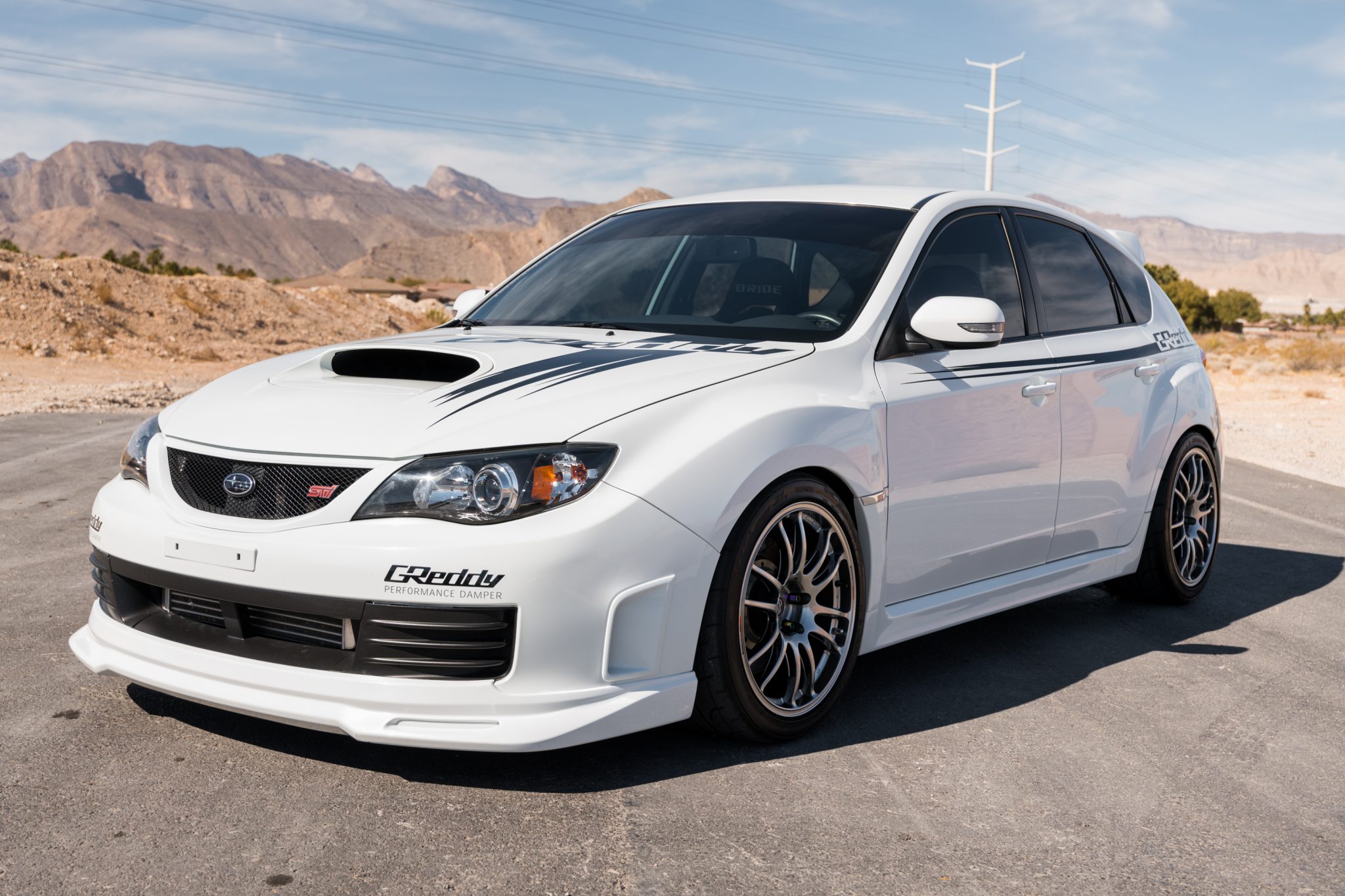
Subaru’s implementation of the blue lighting lacks sufficient brightness adjustment range. Even at the minimum setting, the lights remain uncomfortably bright for many drivers, particularly those with light sensitivity or those driving on dark rural roads where the contrast between the bright dashboard and dark surroundings is most pronounced.
The limited dimming capability forces drivers to either accept the uncomfortable brightness or struggle with insufficient gauge visibility. The WRX’s center console continues the problematic lighting theme with bright white LED backlighting for the infotainment touchscreen and climate control buttons.
The contrast between the blue gauge lighting and white console lighting creates a visually inconsistent and distracting environment. The lack of coordinated color temperature and brightness control between these systems results in competing light sources that fragment driver attention.
Digital display areas within the instrument cluster present additional challenges due to their high contrast and brightness. Information like the trip computer, gear indicator, and boost gauge are displayed in bright white text against dark backgrounds, creating intense bright spots within an already overly illuminated gauge cluster.
These bright digital elements can cause temporary vision adaptation issues when drivers shift their gaze between the gauges and the road. The WRX’s approach to warning lights and indicators compounds the visibility problems.
Critical warnings like check engine lights, oil pressure indicators, and temperature warnings use the same blue backlighting as the general gauges, making it difficult to immediately distinguish between normal operation indicators and urgent warnings. This lack of visual differentiation can delay driver response to important vehicle status changes.
Professional automotive reviews consistently cite the WRX’s dashboard lighting as a significant ergonomic flaw. Many reviewers note that the bright blue lighting becomes particularly problematic during long drives or track sessions where driver fatigue is already a concern.
The lighting system’s contribution to eye strain and visual fatigue has been identified as a factor that can compromise driving performance and safety.
4. Toyota 86/Scion FR-S (2013-2020)
The Toyota 86 and its Scion FR-S sibling represent a collaboration between Toyota and Subaru that successfully delivered an affordable, pure sports car experience.
However, the dashboard lighting system in these vehicles demonstrates how cost-cutting measures and design oversights can significantly impact user experience, particularly during night driving conditions.
The primary lighting issue in the 86/FR-S stems from the use of bright white LED backlighting throughout the instrument cluster without adequate brightness control.
The white LEDs produce an intense, cold light that can be overwhelming in dark driving conditions. The brightness level, even when set to minimum, remains uncomfortably high for many drivers, creating a harsh contrast against the dark interior environment.
The instrument cluster design features a central tachometer flanked by a digital speedometer and various warning lights, all illuminated with the same intense white backlighting.
The high contrast between the bright white lighting and black gauge faces creates a visually aggressive environment that can cause eye strain during extended driving sessions.
The uniform brightness across all gauge elements makes it difficult to quickly identify the most important information, as everything appears to glow with equal intensity.
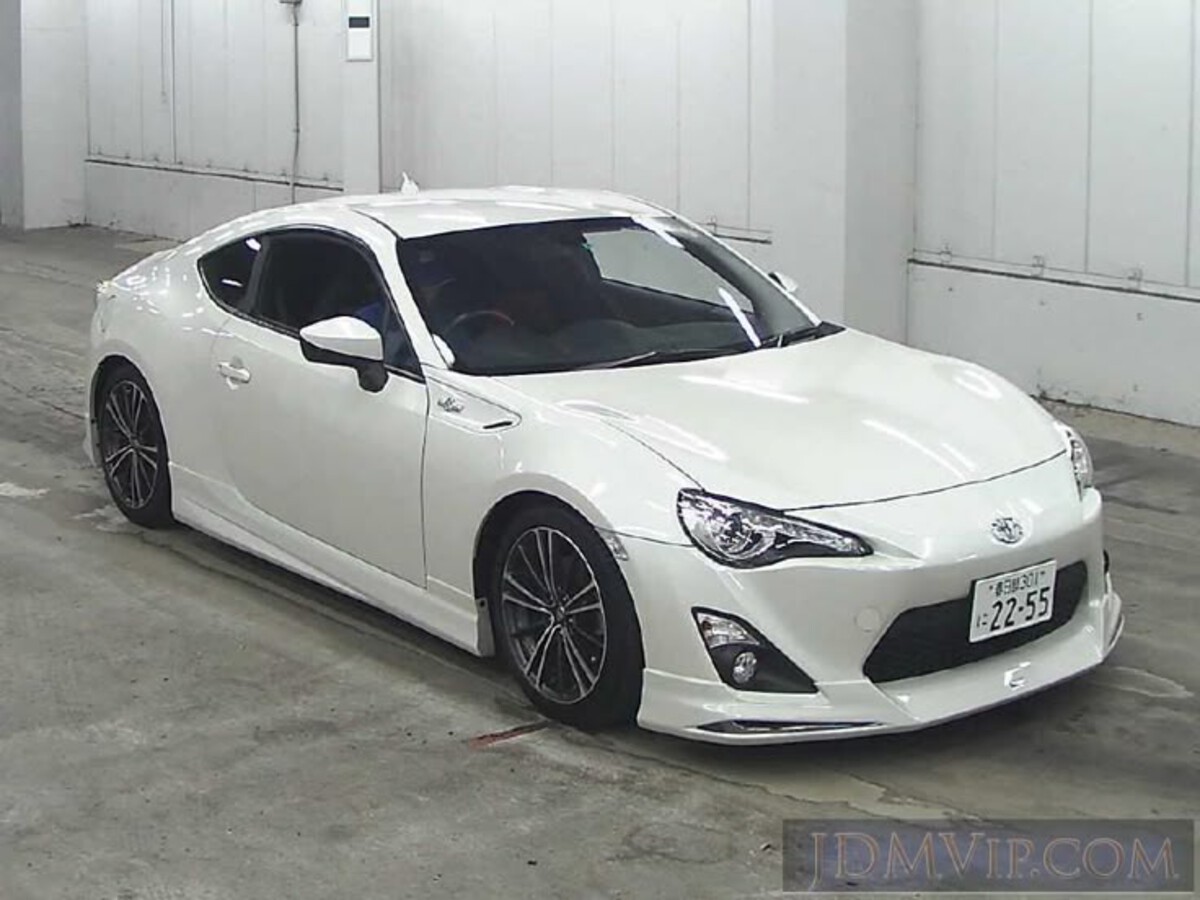
The 86/FR-S suffers from poor light distribution quality, with noticeable brightness variations across different areas of the instrument cluster. Some areas appear significantly brighter than others, creating hot spots that draw unwanted attention and can be distracting during performance driving situations.
The inconsistent illumination suggests cost-cutting in the LED implementation and optical design phases. The center console lighting continues the problematic theme with bright white backlighting for the climate controls and audio system.
The system lacks any meaningful brightness adjustment capability, leaving drivers with no option to reduce the cabin brightness. The combination of bright gauge lighting and harsh console illumination creates multiple competing light sources that make it difficult to maintain adapted night vision.
Digital display elements within the instrument cluster compound the visibility issues through their high contrast presentation. The trip computer, fuel economy display, and other digital readouts use bright white text on dark backgrounds, creating intense bright spots that can cause temporary vision adaptation problems.
These bright elements are particularly problematic when drivers need to quickly reference information during spirited driving. The 86/FR-S lighting system also lacks integration between different illuminated elements.
The gauge cluster, center console, and door panel lighting all operate independently without coordinated brightness or color temperature control. This fragmented approach results in an inconsistent visual environment that varies dramatically between different areas of the cabin.
Switching and controlling lighting throughout the 86/FR-S presents additional challenges. Window switches, hazard light buttons, and other frequently used controls feature bright white LED backlighting that cannot be dimmed.
These scattered bright points create additional glare sources that compete for driver attention and make it difficult to maintain focus on the road ahead. The lighting issues in the 86/FR-S have been widely documented in automotive reviews and owner feedback.
Many professional reviewers specifically mention the dashboard lighting as a significant drawback that detracts from the otherwise excellent driving experience. Owner communities have developed numerous modification guides and aftermarket solutions to address the lighting problems, indicating the widespread nature of the issue and the demand for better solutions.
5. Jeep Wrangler (2018-2024)
The Jeep Wrangler JL generation, while maintaining the rugged capability and iconic styling that defines the brand, suffers from significant dashboard lighting issues that compromise both comfort and functionality during night driving.
The Wrangler’s lighting system reflects design priorities that favor durability and cost-effectiveness over ergonomic optimization and user comfort.
The Jeep Wrangler’s most prominent lighting problem involves the use of bright white LED backlighting throughout the instrument cluster and center console without adequate brightness adjustment capability.
The white LEDs produce an intense, clinical light that becomes particularly problematic during off-road night driving, where maintaining natural night vision is crucial for going through the challenging terrain safely.
The instrument cluster design features analog gauges with digital information displays, all illuminated with uniform bright white backlighting. The high intensity lighting creates excessive contrast between the bright gauge faces and the dark interior environment, making it difficult for drivers to maintain their eyes’ adaptation to darkness.
This issue is particularly pronounced during trail driving, where drivers frequently need to look between the gauges and dark trail conditions ahead.

The Wrangler’s center console lighting continues the problematic theme with the UConnect infotainment touchscreen and climate control area featuring bright white backlighting that lacks sufficient dimming capability.
The large touchscreen, in particular, becomes a significant source of glare that can be seen reflecting in the windshield during night driving. This reflection issue is compounded in convertible models where the lack of a solid roof structure allows more ambient light to interact with the bright interior lighting.
Climate control and switch lighting throughout the Wrangler present additional challenges for night driving comfort. The numerous switches for four-wheel drive systems, differential locks, and other off-road features all feature bright white LED backlighting that cannot be adjusted independently.
During technical off-road driving, where these controls are frequently used, the bright lighting can compromise night vision and make it difficult to see trail obstacles and hazards. The Wrangler’s approach to warning lights and system indicators compounds the visibility problems.
Important off-road system indicators like four-wheel drive engagement, differential lock status, and terrain management settings use the same bright white backlighting as decorative elements, making it difficult to quickly distinguish between active systems and passive indicators. This lack of visual hierarchy can delay driver response during critical off-road situations.
Digital display areas within the instrument cluster create additional brightness hot spots that contribute to the glare problem. The trip computer, compass, and off-road information displays use bright white text on dark backgrounds, creating intense bright spots that can cause temporary vision adaptation issues.
These bright elements are particularly problematic during technical driving, where quick reference to multiple information sources is necessary. The Wrangler’s lighting issues have generated consistent criticism from automotive reviewers who specialize in off-road vehicles.
Professional reviews routinely cite the dashboard lighting as a significant ergonomic flaw that detracts from the vehicle’s otherwise excellent off-road capability.
The lighting problems are considered particularly serious given the Wrangler’s intended use in challenging nighttime off-road conditions where optimal visibility is crucial for safety.
The market response to these lighting differences is becoming increasingly apparent. Consumer reviews and automotive journalism consistently highlight dashboard lighting quality as a significant factor in vehicle satisfaction.
Owners of vehicles with poor lighting systems frequently seek aftermarket solutions or avoid night driving altogether, while those with well-designed systems report improved comfort and reduced fatigue during long drives.
Looking toward the future, the trend favors sophisticated, user-customizable lighting systems. As consumers become more aware of the importance of ergonomic interior design, manufacturers will be compelled to invest in better lighting solutions.
The integration of artificial intelligence and biometric monitoring in vehicles may lead to even more advanced systems that can automatically optimize lighting based on individual driver physiology and stress levels.
The comparison ultimately demonstrates that dashboard lighting is not a luxury feature but a fundamental aspect of vehicle safety and usability. Manufacturers who fail to prioritize proper lighting design risk compromising their customers’ safety and satisfaction, while those who invest in advanced lighting systems provide tangible benefits that enhance the driving experience.
As the automotive industry continues to evolve, the quality of dashboard lighting will likely become an increasingly important differentiator between vehicles and manufacturers.
Also Read: 5 Cars With Night-Vision Features vs 5 With Poor Low-Light Performance

